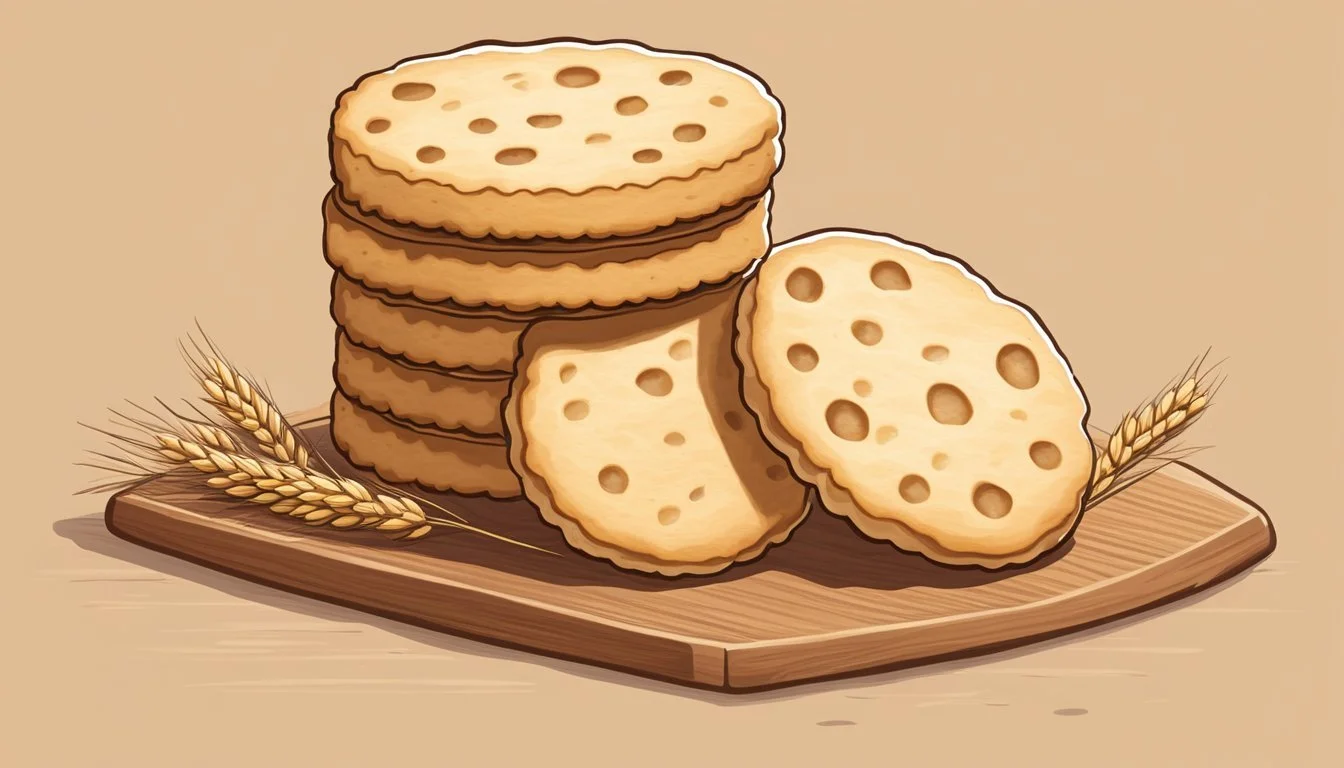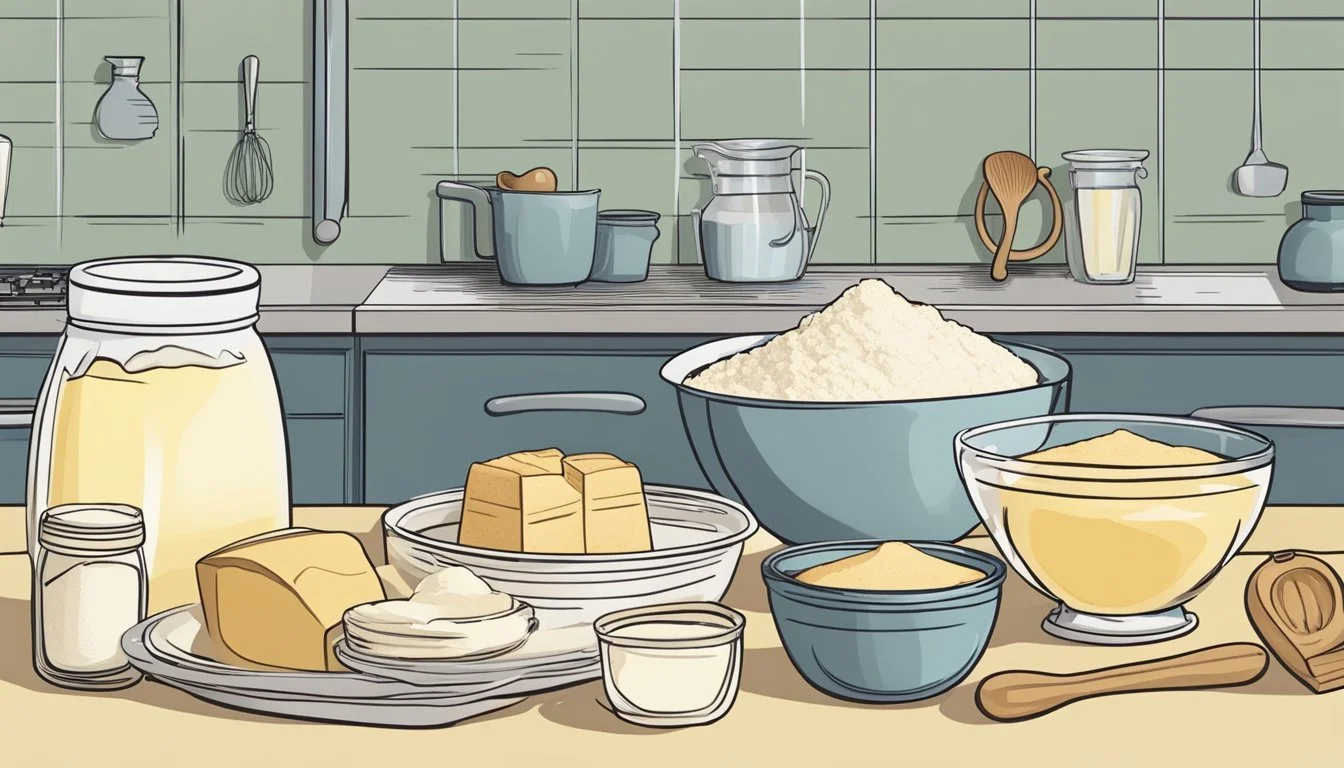Is Shortbread Gluten-Free?
Understanding its Ingredients and Variations
Shortbread is a classic biscuit known for its rich, buttery flavor and crumbly texture. Traditionally, it's made from three basic ingredients: sugar, butter, and wheat flour. The presence of wheat flour means that conventional shortbread contains gluten, a group of proteins found in grains such as wheat, barley, and rye. Gluten is what gives dough its elasticity and baked goods their chewy texture, but it can cause health issues for individuals with celiac disease or gluten sensitivity.
However, there is good news for those looking to enjoy shortbread without the gluten. With the increasing demand for gluten-free options, many recipes now substitute wheat flour with various gluten-free alternatives. Ingredients such as almond flour, rice flour, and gluten-free all-purpose flour blends can be used to create a gluten-free shortbread that mimics the traditional taste and crumbly texture.
It's important to note that when preparing gluten-free shortbread, the method of preparation may vary slightly from the traditional recipe to achieve a similar texture and structure. Baking at lower temperatures and using techniques such as pressing the dough into pans or shaping it into rounds before baking help maintain the shortbread's characteristic mouthfeel. Ensuring cross-contamination is avoided by using clean utensils and baking surfaces is crucial for those with gluten-related disorders.
Understanding Gluten and Its Role in Baking
Gluten—a protein composite found in grains such as wheat, barley, and rye—serves as the scaffolding in traditional baking. Its unique viscoelastic properties are activated when water is added to the flour and the dough is mixed. The gluten proteins, gliadin and glutenin, bond to form a network that traps air bubbles, giving baked goods their structure and chewy texture.
However, individuals with celiac disease or gluten sensitivity must avoid gluten to maintain health. This has led to the development of gluten-free baking alternatives. Gluten-free flours and blends often include ingredients like rice flour, corn flour, tapioca starch, and potato starch. Each has unique characteristics, such as:
Rice Flour: A neutral taste and sandy texture, often used in combination with other gluten-free flours.
Corn Flour: Fine and whole-grain options available, adds a light corn flavor.
Creating successful gluten-free baked goods requires a substitute for gluten to mimic its binding and structural functions. Here, xanthan gum comes into play, a thickening agent that can help mimic the elasticity and texture that gluten provides.
A gluten-free flour blend aims to balance taste, texture, and baking characteristics. The goal is to reproduce the desirable attributes of gluten without using wheat or other gluten-containing grains. Precise blending of various gluten-free flours with ingredients like xanthan gum ensures that bakers can still enjoy baked goods with the desired crumbly and tender qualities associated with traditional baking flour, essential for delicacies like shortbread.
The Basics of Making Shortbread
Shortbread, a classic biscuit beloved for its buttery flavor and crumbly texture, is traditionally made with just a few key ingredients. This section focuses on how to create the perfect classic shortbread and how to modify it for a gluten-free diet.
Essential Ingredients
The quintessential shortbread recipe requires only three primary components:
Butter: The star of the show, giving the cookie its rich flavor and tender texture.
Sugar: Typically granulated or powdered, sugar sweetens the dough and contributes to its texture.
Flour: Standard recipes use all-purpose flour, but gluten-free alternatives can be used.
Classic Shortbread Recipe
A simple ratio to remember for classic shortbread is 1 part sugar, 2 parts butter, and 3 parts flour by weight. Salt is sometimes added for flavor enhancement.
Shortbread Texture and Flavor
The hallmark of shortbread is a buttery and crumbly texture paired with a delicate sweetness.
Preparing Dough and Baking Techniques
For the dough, ingredients are mixed until just combined, then pressed into a pan or rolled and cut. Baking at a low oven temperature, typically around 300°F, prevents over-browning.
Shortcut: The Slice and Bake Method
Chilling the dough as a log and then slicing it into rounds simplifies the shaping process and ensures even baking.
Variations of Shortbread
Flavor variations can include vanilla or almond extract, lemon zest, chocolate chips, or nuts.
Creating Shapes and Designs
Shortbread can be cut into various shapes—rectangles, wedges, or circles—using a sharp knife or cookie cutters before baking.
Shortbread Decorating Ideas
Decorate baked shortbread with a drizzle of chocolate, a sprinkle of powdered sugar, or jam fillings for a touch of elegance.
Troubleshooting Common Baking Issues
Common issues include dough that's too crumbly (needs more butter) or too tough (overworked).
Shortbread Without Gluten: Modifications and Tips
Replace traditional flour with gluten-free flour blends, and consider adding xanthan gum to mimic the structural protein in gluten.
Storage and Preservation of Shortbread
Store in an airtight container at room temperature to maintain freshness. Shortbread also freezes well.
Gluten-Free Shortbread in Diet and Health
Gluten-free shortbread is suitable for those with gluten sensitivity or celiac disease, providing a safer alternative without compromising on taste.
Shortbread Through the Seasons
Seasonal flavors like ginger, cinnamon, and cardamom are popular, especially during the holidays for Christmas cookies.
Complementary Pairings and Serving Ideas
Shortbread cookies pair excellently with coffee, tea, or espresso, offering a satisfying crunch.
Homemade vs Store-Bought Gluten-Free Shortbread
Homemade shortbread affords control over ingredients and flavors, while store-bought offers convenience and consistency.
Going Beyond Shortbread: Related Gluten-Free Treats
Gluten-free cookie varieties extend to sugar cookies, chocolate chip cookies, and peanut butter cookies.
Advanced Baking Tips for Gluten-Free Shortbread Experts
For a crispier texture, experiment with different gluten-free flours like white rice or almond flour.
Gluten-Free Shortbread FAQs
This subsection would tackle common questions and offer ingredient notes and baking tips for gluten-free shortbread.
Conclusion
In conclusion, shortbread is versatile and customizable. Despite its simplicity, attention to detail can lead to delicious results, especially when catered to gluten-free requirements.



